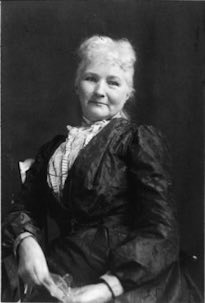Mary Harris Jones was over fifty years old before she began her career as a labor organizer. She was born in Ireland, but her family was forced to emigrate because they rebelled against British rule.
While living in the northeast, she completed school, became a teacher, and married an iron moulder. From her husband, George E. Jones, she learned how workers were struggling against abuses by unscrupulous employers.
Two tragic events changed her from a bystander to a fighter for the rights of labor. In 1867 Mary Jones lost her husband and four children in a yellow fever epidemic. And as she was rebuilding her life in Chicago four years later, her successful dressmaking business was destroyed in the famous Chicago fire.
Destitute and alone, Mary Jones strongly identified with working people who had no protection against low wages, long hours, and dangerous working conditions. Owners often used blacklists and violence to intimidate workers and prevent unionism.
“Mother” Jones, as she came to be called, was neither frightened nor discouraged. She fearlessly began to organize both men and women to fight for their rights. A fiery and electrifying speaker, “Mother” Jones specialized in creating a public outcry over the inhuman treatment of workers. She once put together a caravan of children on a march to dramatize the evils of child labor. Her most famous efforts were attempts to organize the miners of West Virginia and Colorado.
Scorning jail, deportation to other states, and threats on her life, “Mother” Jones became an enemy of the wealthy business owners. Well into her eighties, she continued to agitate and actively assist in the struggle to unionize streetcar, garment, and steel workers.
Unique as a woman in the predominately male labor movement, “Mother” Mary Harris Jones became a symbol of labor’s insistence on its right to decent treatment and wages.

